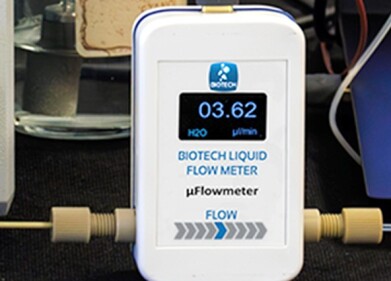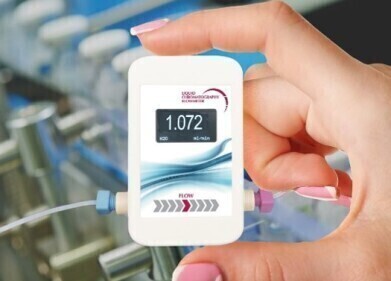HPLC, UHPLC
Chromatography in Space and Star Trek Realities
Oct 28 2016
The Star Trek original television series is fifty years old in 2016 — fifty years since Captain James T. Kirk, Spock, Uhura and crew set sail on the starship Enterprise on a five-year mission “to boldly go where no man had gone before”.
Besides it gripping storylines though, Star Trek also delivered a glimpse into a future reality with high tech gadgets and spacecraft that travel faster than light. So, looking back with the benefit of hindsight — how much of the technology has come to pass, and what can we expect for the next generation of real-life space travellers?
Star Trek — prophet or loss?
Considering that the writers of Star Trek weren’t scientists — how good were their ideas and predictions when viewed from now. Almost everyone now carries a mobile phone, devices so powerful that Star Trek’s crew could only have dreamt about devices that could send pictures and moving images as well as sound. The communicators used in Star Trek look like precursors of the flip-top mobile phone.
What about power? The engines that powered the Enterprise were based on fusion reactions — something we are working on to replace fossil fuels and fission technology. So, fusion powered craft are still science fiction. But Star Trek also used ion drives — and these are something that are used. Many different countries use ion drives — NASA’s Evolutionary Xenon Thruster or NEXT — to power our space craft, so this is something that sci-fi predicted before scientists developed a working model.
Star Trek in the future
Planning for future space missions is now focused on emulating Star Trek’s five-year-mission. Although there has been a habitable space station orbiting Earth for several years — NASA is looking at missions to Mars, something that will take many years and will need self-sufficient spacecraft. So, that means generating food and more importantly, water. Astronauts already drink water that has been recovered from urine — approximately 80% of the urine is recycled as drinking water, but NASA is looking to boost this up to above 90%.
One development that Star Trek’s writers couldn’t have foreseen is the way computer and technology have advanced. One development that NASA is looking to exploit is the use of 3D printing. 3D printers could be used to make tools and even replacement parts for long space missions — a kind of make your own swiss army knife.
Keeping astronauts safe from contaminants and the ability to analyse unknowns is also a consideration in any long space mission. That’s where advanced chromatography systems that are simple to operate are likely to interest space scientists. This article, Increasing Mass Spec Sensitivity with the Novel ionKey/MS System, Making Microscale LC-MS Routine, Robust, and Accessible to Scientists at any Skill Level discusses how technology can make advanced systems small and simple to operate — perfect for space travel to Mars.
Digital Edition
Chromatography Today - Buyers' Guide 2022
October 2023
In This Edition Modern & Practical Applications - Accelerating ADC Development with Mass Spectrometry - Implementing High-Resolution Ion Mobility into Peptide Mapping Workflows Chromatogr...
View all digital editions
Events
Jan 20 2025 Amsterdam, Netherlands
Feb 03 2025 Dubai, UAE
Feb 05 2025 Guangzhou, China
Mar 01 2025 Boston, MA, USA
Mar 04 2025 Berlin, Germany



.jpg)








